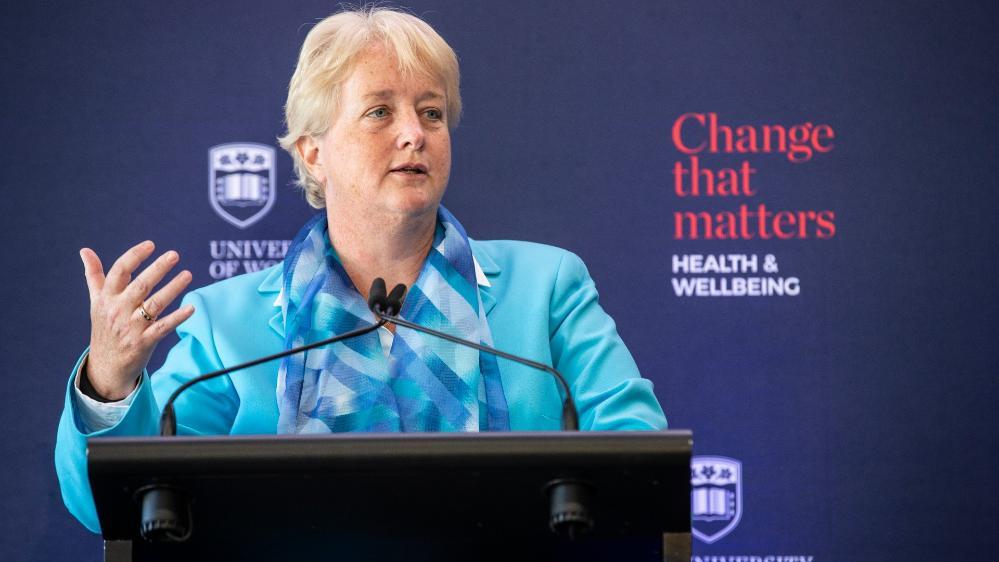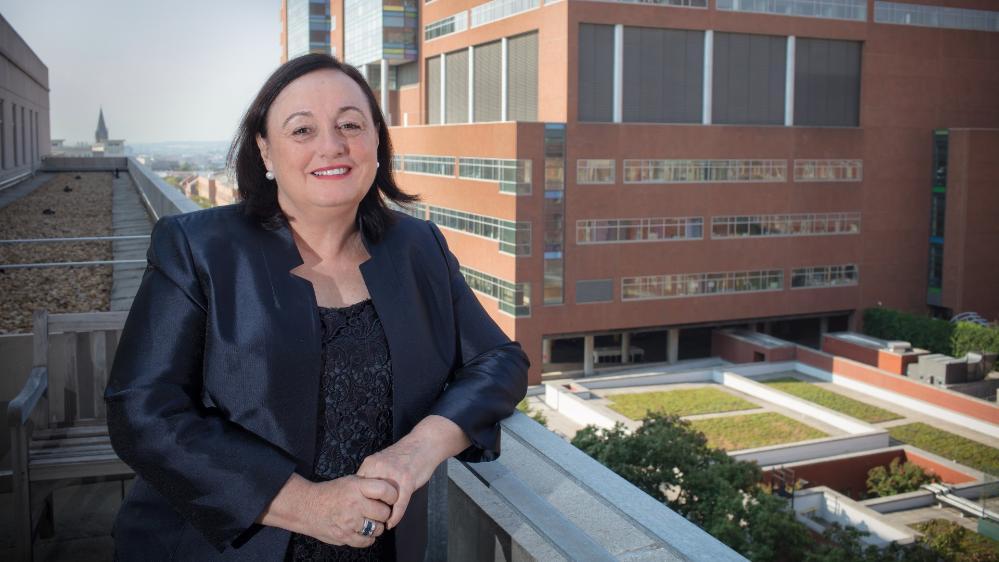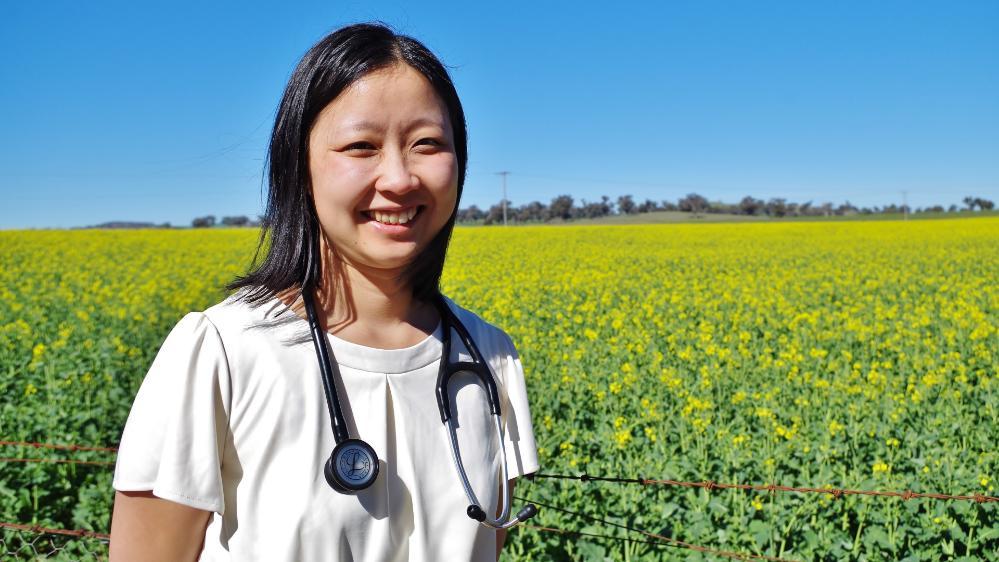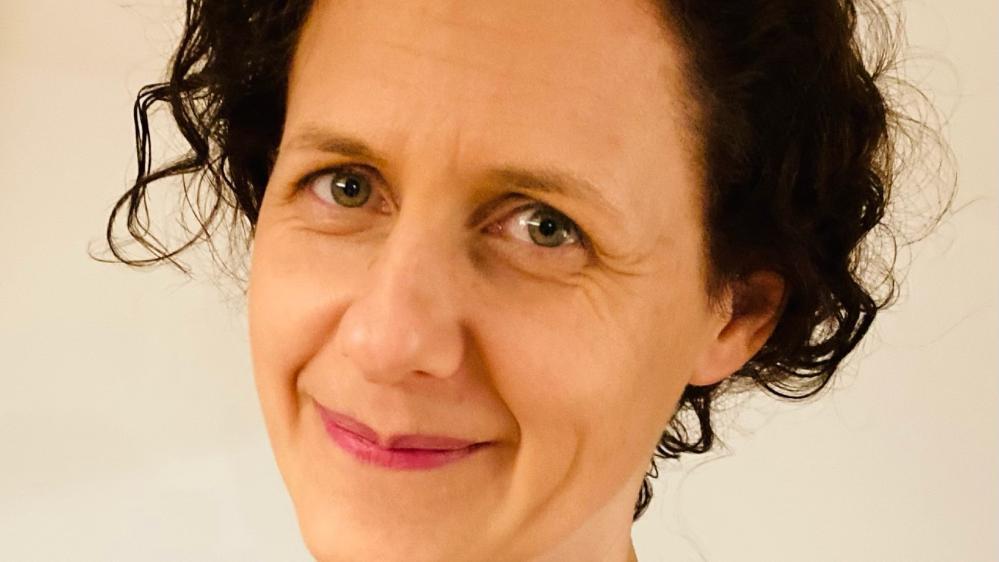The changing face of medicine
The effect of a global pandemic on public health

Professor Alison Jones
Deputy Vice-Chancellor (Health and Communities) and Executive Dean Faculty of Science, Medicine and Health, UOW
Professor Alison Jones is no stranger to invisible killers. The UOW Deputy Vice-Chancellor (Health and Communities) and Executive Dean of the Faculty of Science, Medicine and Health has been researching public health challenges and the future of clinical toxicology for decades.
Her portfolio encompasses leadership of the University’s cutting edge Health and Wellbeing Strategy which aims to deliver a transformational suite for healthcare and wellbeing designed to address global and regional health challenges such as those the world is now facing.
Professor Jones says there have been some important and significant changes in healthcare since the coronavirus pandemic began, but there are still areas which need attention.
“The important changes are the rise of telehealth, greater cooperation and focus of patient centred care. It was the pandemic that created the impetus for Medicare billing around telehealth,” Professor Jones says.
“The downside is that routine healthcare like dentistry and cancer prevention are being relatively ignored. For example, elective surgeries are being postponed, cancer preventive actions limited and as a consequence there are enhanced chronic diseases including cancer.
“Socially isolated or disadvantaged groups have unfortunately experienced unprecedented levels of mental health challenges and this has still to be fully addressed.”
The magnitude of this pandemic highlighted the flaws and shortcomings of health systems globally and Professor Jones says although lessons have been learned for future reference, the pandemic is not the only crisis facing healthcare delivery around the world.
“[The changes made] should not just be about viral pandemic preparedness. We have an even bigger global crisis against us which is the impact of climate change [and its consequences] such as bushfires,” she says.
“The silver lining is that society in general has been reduced back to a more basic level and been given time to appreciate our privileges – freedom to meet friends, go out to eat, travel on transport and around the world on holidays. I’m hoping moving forward post-pandemic that people will want to continue to stay locally connected.”
More importantly, Professor Jones says the role of health practitioners in the care of patients, even at their own personal risk, has been highlighted during the pandemic.
“I think the pandemic has highlighted supply chain difficulties, for example for medicine and Personal Protective Equipment (PPE), but on the upside it has really catalysed the role for telehealth which was long overdue.
“We need to enhance pandemic preparedness, the role of PPE, the role of vaccines and the role of public health and emergency response. It has never been more important to work as a health team.
“The pandemic has highlighted global inequities in health and healthcare. Without a truly global strategy to support vulnerable populations, health equity will continue to worsen. The United Nations and World Health Organization need to drive their networks with governments and healthcare providers to actively address these challenges.
“Health literacy is absolutely key to enhancing population understanding and action to improve health,” she says.

Professor Patricia Davidson
Dean of Nursing at Johns Hopkins University and incoming UOW Vice-Chancellor, May 2021
Professor Patricia Davidson has been at the epicentre of the COVID-19 crisis as the Dean of the Faculty of Nursing at Johns Hopkins University in Baltimore in the USA.
The internationally recognised researcher, academic, clinician, UOW graduate and the University’s Vice-Chancellor from May 2021, is aware that getting the right information at the right time is instrumental in combatting a crisis of this magnitude.
“We know so little about COVID-19 but as we are learning more about it we have been focussing on real-time data in the US and linking that data to other data sources, such as the number of intensive care unit beds available,” Professor Davidson says.
“There is an emphasis on good infection control and around the science of ‘don-ing and doff-ing’ PPE. Testing is important as well, but it is more challenging in the US than in Australia.
“There has been other innovative work on a basic science level, things like blood transfusions of people with antibodies.”
However, what has been most important in controlling infection rates, according to Professor Davidson, has been the role of efficient and effective systems of operation.
“From my perspective what has become really important is the role of systems, not just sticking to protocols but also having a robust health system to be able to cohort patients, screening them offsite, adequate resources for supply chain and adequate staff – a good response is really dependant on all of these,” she says.
Professor Davidson has firsthand experience in putting in place systems to cope with epidemics after Johns Hopkins University and Hospital was called in to help develop systems, specifically a biocontainment strategy, with the Ebola virus scare in 2014.
“Where there are systems in place, the [medical] responses have been effective, but for true universal healthcare we need a consistent philosophy which is difficult to manage with the current movement of people around the world.”
In countries where epidemics have occurred previously, Professor Davidson says the systems that existed have worked in slowing the spread of COVID-19. But she argues that where there is inequity in access to medical intervention or support, or a greater disparity between rich and poor, even the best systems will fail.
“Places like Rwanda have been very effective in contact tracing [because of its experience with Ebola], while in Brazil, where there are great inequalities, things are very fragile,” she says.
“Some parts of the world have moved forward 20 years in three months. Although the resistance to things like telehealth and online learning may have lessened, the digital divide means we can’t have those things unless they are equitably distributed.
“To combat this virus we need to have groups of people to flex and be able to change circumstances. It’s really a social justice issue – not letting the most vulnerable in society fall through the cracks.”

Dr Teena Downton
GP, GP Obstetrician, Medical Educator and rural health advocate, Cowra District Hospital
Since graduating from UOW in 2012, Dr Teena Downton has dedicated her career to improving the health outcomes of those living in rural Australia.
Living and working in the regional central west area of New South Wales during the height of the COVID-19 pandemic presented Dr Downton with a unique set of challenges.
“Within health and medical education, there has been rapid evolution in the way we are doing things in such a short space of time. I don’t think we will be going back completely to the way things were pre-COVID,” Dr Downton says.
“Professional development opportunities for doctors have always been more accessible to those in the city, but pleasingly since the advent of the pandemic we are seeing more online educational events such as webinars available for rural doctors that weren’t being delivered in this space previously.
“There have always been barriers to the implementation of telehealth, with concerns about the need to strike the right balance between enhancing access while at the same time ensuring that quality of care is not compromised. Since COVID-19, there has actually been a good uptake of telehealth, with high levels of acceptability reported between patients and clinicians.”
Dr Downton says there has been a great deal of advocacy from the Rural Doctors Association of Australia and the medical colleges for many years for a greater availability of telehealth but government funding arrangements prevented things moving forward.
“When the pandemic began, the Federal Government introduced equivalent Medicare rebates to support telehealth. This meant that private general practices across the country have still been able to offer affordable consultations via phone or videoconference to patients who may have otherwise neglected their health while self-isolating at home.”
Working as a team in both the private and public healthcare sector has also become much more important as the pandemic has evolved, especially in rural communities where resources are more limited.
“In GP settings, many practices have changed their rostering to support the running of a respiratory clinic separate to the main GP practice. At the Cowra GP clinic where I work, there is a dedicated roster for the running of our local respiratory clinics which includes reception staff who have upskilled to help support the efficient running of the service,” Dr Downton says.
“Registered nurses and similarly qualified practice staff are rostered on in our respiratory clinic to help maintain a clean environment and work with the doctors. Practices are troubleshooting many of the challenges of the pandemic using team-based approaches.”
While traditionally patients in rural and remote areas have had to travel further and wait longer for specialist appointments, Dr Downton says she has observed that there have been more city-based specialist services offering telehealth appointments to country patients during the pandemic, especially mental health support.

Kate Ruperto
Clinical Nurse Educator, Wollongong Hospital
Kate Ruperto is the Nurse Educator for the Emergency Departments in the Illawarra Shoalhaven Local Health District, responsible for the operations and clinical care practice of emergency nurses from Wollongong through to Milton.
So when the COVID-19 virus was declared a global pandemic, she had to act immediately.
“The first thing we did was enhance the triage-level screening [at all the emergency departments in the district]. We had done something similar when the SARS and swine flu virus came, so this time it was a matter of keeping all staff up to date with the COVID-19 case definitions to identify patients and put them in appropriate masks and isolation areas,” Ruperto says.
“We knew we had to set up good communication processes from Wollongong to Milton so there were a lot of high-level meetings early on to do that, exchanging information that was coming from NSW Health over the phone or via email as it was quicker than waiting for websites to update.”
Ruperto says when it became clear COVID-19 was not going to follow the same pathways as swine flu or SARS, she and the emergency department team realised they had to look further afield to get the most immediate and accurate information.
“The best information we had at the time was from medical staff in Italy,” she says.
“It was the kind of information that is normally published in medical journals months after the event, but we needed to be as informed as soon as was possible.”
All health institutions have a disaster plan which includes one specific for pandemics, and Ruperto had to work closely with each clinical nurse educator and manager in the hospitals under her jurisdiction to ensure procedures were consistent.
“Once we had the outline of the pandemic plan we knew it was the manipulation of that to the case definitions,” she says.
“We used that in conjunction with the information we had received from the Italian healthcare professionals in regards to streaming from triage and separating respiratory patients and fever patients from others and localising that to each site.
“I developed resources and the clinical nurse educators made them available to staff on the floor. At the beginning of every shift we had a safety huddle which became really important – staff became very engaged.
“We also identified at each site staff who could be upskilled and then looked at how we could increase our general staff base, looking at those who had recently retired, those who had left who were senior nurses who we could train up again.”
Like Dr Davidson, Ruperto says the success of any plan is closely linked to the systems on which those plans are based and ultimately a commitment to collaboration to make them work.
Professor Alison Jones MD
Deputy Vice-Chancellor (Health and Communities) and Executive Dean Faculty of Science, Medicine and Health, UOW
Professor Patricia Davidson
Bachelor of Arts, 1985
Master of Education, 1993
Dr Teena Downton
Bachelor of Medical Science, 2008
Kate Ruperto
Graduate Diploma (Adult Education), 2011
Bachelor of Nursing, 1999